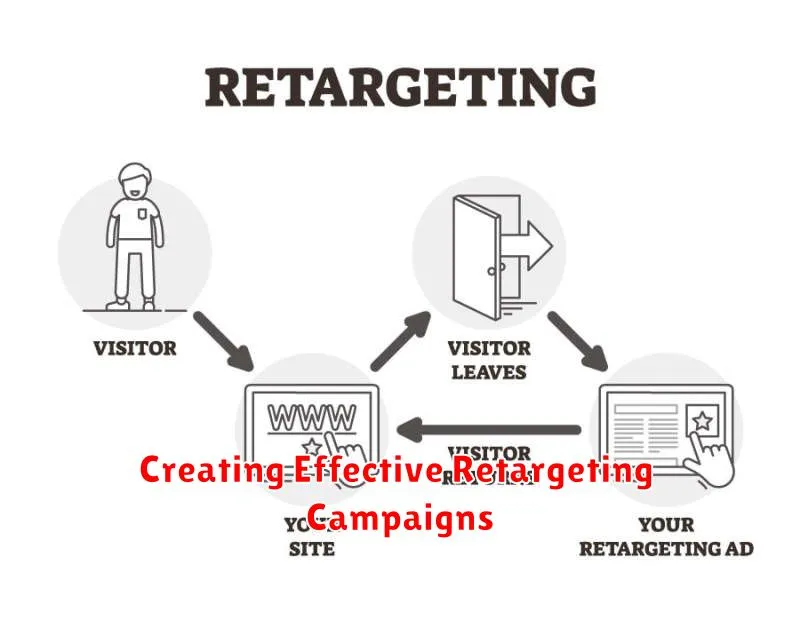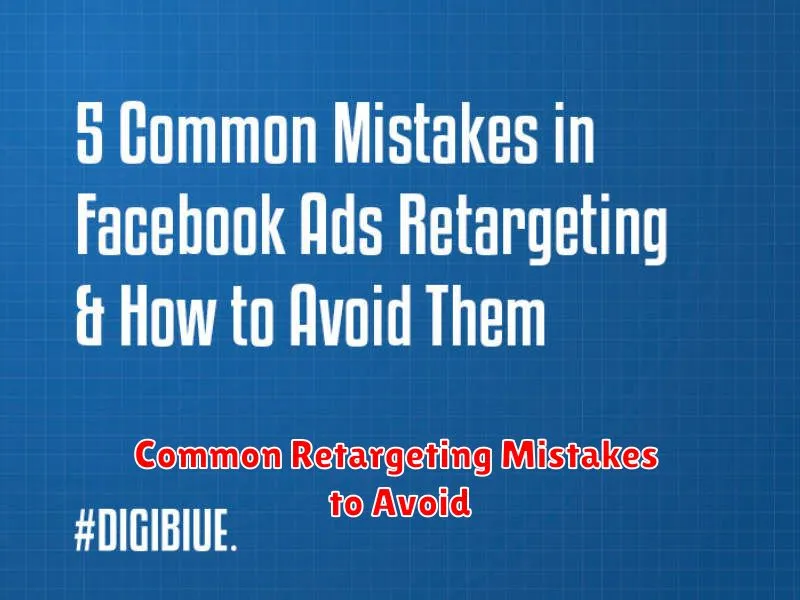Are you struggling to convert website visitors into paying customers? Do you feel like you’re losing potential sales due to abandoned carts and browsing sessions? Retargeting ads offer a powerful solution to recapture these lost opportunities and boost your online shopping success. This comprehensive guide will delve into the intricacies of retargeting, providing you with the knowledge and strategies necessary to implement effective campaigns and maximize your return on investment (ROI).
Learn how to leverage retargeting ads across various platforms to re-engage potential customers who have demonstrated prior interest in your products or services. From understanding the fundamentals of retargeting ad strategies to mastering advanced techniques like dynamic retargeting and segmentation, this guide will equip you with the tools you need to transform casual browsers into loyal customers. Explore best practices for crafting compelling ad creatives, optimizing bidding strategies, and analyzing campaign performance to achieve unparalleled online shopping success.
What is Retargeting and How Does it Work?
Retargeting, also known as remarketing, is a powerful digital advertising technique that allows you to reconnect with users who have previously interacted with your online store. It works by displaying targeted ads to these individuals as they browse other websites or use social media platforms.
The process begins when a user visits your website. A small piece of code, often referred to as a pixel or tag, is triggered and places a cookie in the user’s browser. This cookie anonymously tracks their activity on your site, such as products viewed or added to a cart.
When the user leaves your site without completing a desired action, such as making a purchase, the cookie allows ad platforms to identify them. This enables your retargeting campaigns to display relevant ads, reminding them of the products they showed interest in and encouraging them to return to your store and complete their purchase.
Benefits of Using Retargeting Ads in Online Shopping
Retargeting ads offer numerous advantages for online businesses seeking to boost sales and improve their marketing ROI. One of the most significant benefits is the ability to re-engage potential customers who have shown prior interest in your products or services. By reminding them of what they viewed or added to their cart, you effectively bring them back to your website, increasing the likelihood of a purchase.
Another key benefit is the improved conversion rate. Since retargeting focuses on individuals who have already interacted with your brand, they are inherently more qualified leads compared to a cold audience. This targeted approach often translates to higher conversion rates and a better return on your ad spend.
Brand recall and reinforcement are also significantly enhanced through retargeting. Repeated exposure to your brand messaging keeps your products or services top-of-mind for potential customers. This consistent presence can be crucial in a competitive market, helping you stand out and influencing purchasing decisions.
Furthermore, retargeting allows for highly personalized advertising experiences. You can tailor ad content based on individual browsing history, showcasing relevant products or offering specific promotions to entice customers back. This customized approach strengthens engagement and promotes a more compelling customer journey.
Different Types of Retargeting Ads
Site-based retargeting is the most common type. It focuses on users who have visited your website but didn’t complete a desired action, such as making a purchase or signing up for a newsletter. These ads then follow those users as they browse other websites.
Pixel-based retargeting uses a small piece of code (a pixel) placed on your website to track user behavior. This data allows you to segment your audience based on specific actions, like viewing a product page or adding an item to their cart, enabling highly personalized ads.
List-based retargeting allows you to upload customer lists (email addresses, phone numbers) to advertising platforms. This is especially useful for targeting existing customers with tailored promotions or re-engaging subscribers who haven’t interacted with your brand recently.
Dynamic retargeting takes personalization a step further by showing ads featuring the specific products or services a user viewed on your website. This creates a more compelling and relevant ad experience, increasing the chances of conversion.
Search retargeting focuses on users who have recently searched for keywords related to your products or services. These ads are displayed on search engine results pages, catching potential customers actively looking for what you offer.
Creating Effective Retargeting Campaigns

Building a successful retargeting campaign requires careful planning and execution. Segmentation is key. Divide your audience based on their behavior, such as products viewed, cart abandonment, or past purchases. This allows for personalized messaging that resonates with each segment.
Compelling creatives are crucial. Use high-quality images and videos that showcase your products in an engaging way. Your ad copy should be concise and action-oriented, highlighting the benefits of returning to your site. Strong calls to action, such as “Shop Now” or “Complete Your Purchase,” encourage immediate action.
Frequency capping prevents ad fatigue. Limit the number of times a user sees your retargeting ads within a given timeframe. A/B testing various elements like ad creatives, copy, and targeting parameters helps optimize campaign performance. Regularly analyze campaign data to identify what works best and adjust your strategy accordingly.
Targeting the Right Audience with Your Retargeting Ads
Effective retargeting hinges on precise audience targeting. Casting too wide a net dilutes your efforts and budget. Focusing on the right segments maximizes your return on investment.
Segmentation is key. Divide your audience based on their behavior on your website. Consider these categories:
- Product Viewers: Target users who viewed specific products but didn’t purchase. Tailor ads showcasing those exact items, perhaps with a small incentive.
- Shopping Cart Abandoners: Remind users about items left in their carts. Highlight free shipping or limited-time discounts to encourage completion.
- Past Purchasers: Encourage repeat business by promoting related products or new arrivals. Offer exclusive discounts to foster loyalty.
Beyond these basic segments, explore demographic and interest-based targeting. Refine your audience further based on factors like age, gender, location, and interests relevant to your products.
Continuously analyze campaign performance and adjust targeting parameters accordingly. Regularly review your segments and identify areas for improvement to optimize your retargeting efforts.
Best Practices for Retargeting Ad Design
Effective retargeting ad design is crucial for re-engaging potential customers and driving conversions. Follow these best practices to create compelling retargeting ads.
Segmentation is Key
Segment your audience based on their behavior on your website. Users who viewed specific products should see ads featuring those same items or related products. A cart abandoner needs a different message than someone who simply browsed your homepage.
Tailor Your Messaging
Craft compelling ad copy that speaks directly to each segment. Highlight the benefits of the product or service and remind them why they were interested in the first place. Use strong calls to action to encourage immediate purchase.
Visually Appealing Ads
High-quality product images are essential. Use professional photography and visually engaging designs to capture attention. Consistent branding across all your marketing channels strengthens brand recognition and builds trust.
Frequency Capping
Avoid overwhelming users with too many ads. Implement frequency capping to limit the number of times a user sees your retargeting ads within a specific timeframe. This prevents ad fatigue and maintains a positive user experience.
Measuring the Success of Your Retargeting Campaigns
Analyzing the performance of your retargeting campaigns is crucial for optimizing your return on investment. Key Performance Indicators (KPIs) provide valuable insights into what’s working and what needs adjustment.
Track metrics such as website conversions, which measure how many retargeted users complete desired actions like purchases or sign-ups. Monitor your click-through rate (CTR) to understand how engaging your ads are. A high CTR indicates compelling creatives and effective targeting.
Return on Ad Spend (ROAS) is a vital metric for evaluating profitability. It calculates the revenue generated for every dollar spent on retargeting. Keep a close eye on your Cost Per Acquisition (CPA) to understand how much you’re spending to acquire each new customer through retargeting.
By consistently monitoring these KPIs, you can identify areas for improvement and refine your retargeting strategies to maximize their effectiveness.
Common Retargeting Mistakes to Avoid

Retargeting, while powerful, can be ineffective if not executed properly. Avoid these common pitfalls to maximize your return on investment.
Targeting Too Broadly
Overly broad targeting wastes budget on uninterested users. Segment your audience based on website behavior, purchase history, and demonstrated interest in specific products or categories. Don’t show the same generic ad to everyone who’s ever visited your site.
Ignoring Frequency Capping
Bombarding users with the same ads leads to ad fatigue and negative brand perception. Set frequency caps to limit the number of times a user sees your ad within a specific timeframe. Find the sweet spot between staying top-of-mind and becoming annoying.
Lack of Ad Refresh
Using the same creative for extended periods leads to banner blindness. Regularly refresh your ads with new visuals, messaging, and offers to maintain user engagement and prevent declining click-through rates.
Failing to Exclude Converters
Continuing to retarget users who have already purchased the product wastes ad spend. Exclude converters from your campaigns to focus on potential customers. This ensures efficient budget allocation and a more positive user experience.

